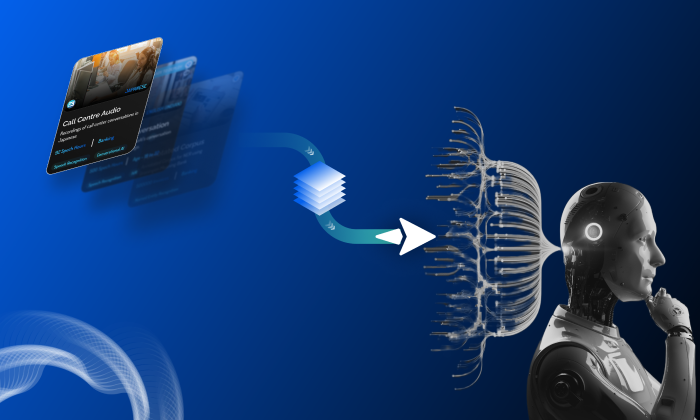How to use command datasets for intent detection?
Intent Detection
Command Datasets
AI Systems
TL;DR
To build a high-accuracy intent classification model, collect diverse wake word plus command audio samples, apply a clear intent taxonomy, train Transformer-based encoders, and iterate based on real-world user feedback.
What Is a Voice Command Dataset and Why It Matters for Intent Classification
Voice command recognition datasets consist of audio recordings that include both activating phrases and follow-up instructions. These are critical for training AI models in systems like smart assistants, automotive interfaces, and contact centers.
Each dataset includes:
- Wake words such as “Hey Siri” or “OK Google”
- Voice commands such as “Play music” or “Set a timer”
These recordings support the training of models that classify user intent accurately, enabling context-aware, real-time interactions.
Why This Matters
Intent detection is a core enabler for responsive and intelligent voice AI systems. It directly influences:
- User experience by ensuring systems respond correctly to spoken input
- Operational efficiency by minimizing misclassifications and delays
- Security by reducing unauthorized or unintended actions
FutureBeeAI’s multilingual datasets, covering over 100 languages, offer a strategic advantage for teams building globally deployable AI systems.
Step-by-Step: From Audio Collection to Intent Model Deployment
Data Collection
- Diversity is essential: Include speakers with varied accents, dialects, age groups, and genders to ensure the model can generalize effectively.
- Use custom speech data collection for use cases with niche or underrepresented inputs.
- Quality standards: Use 16 kHz, 16-bit mono WAV files for optimal performance during training and inference.
Model Training
- Preprocessing pipeline: Clean the audio, align with transcripts, and label each segment using a structured intent taxonomy in JSON format.
- Model architecture: Fine-tune models such as wav2vec 2.0 or other pre-trained speech encoders, adding lightweight classification heads for intent recognition.
Evaluation and Iteration
- Metrics to track: Use confusion matrices, precision, recall, and F1 scores to measure performance.
- Continuous improvement: Incorporate feedback from real-world usage. Apply augmentation techniques such as pitch shifts and time stretching to simulate diverse conditions.
Real-World Applications of Command Datasets
Wake word and command datasets enable smarter, safer, and more intuitive experiences in:
- Smart home ecosystems for controlling lights, thermostats, or appliances
- In-car systems that interpret driver requests for navigation or infotainment
- Customer support systems that automate routine queries through voice interfaces
Top Best Practices for Robust Intent Detection Models
- Data integrity: Collect samples in controlled environments. Use platforms like YUGO to enforce consistency and quality.
- Annotation precision: Apply consistent intent labeling through our audio annotation services, which support slot-filling and contextual classification.
- Model adaptability: Update models regularly with newly collected audio to stay aligned with changing user behavior.
- Multilingual training: Expand your dataset footprint across languages and dialects to meet global deployment needs.
FutureBeeAI’s Role in Enhancing Intent Detection
FutureBeeAI delivers structured command datasets tailored for intent detection applications. Whether you need off-the-shelf multilingual voice data or fully customized wake word plus command recordings, our solutions integrate easily into modern AI pipelines and deliver production-grade performance.
Unlocking the Potential of Intent Detection
Intent detection models only perform as well as the data they are trained on. FutureBeeAI offers a proven path to high-performing voice systems with multilingual, noise-aware, and demographically balanced datasets. Whether you are refining existing models or launching a new assistant, our team is equipped to deliver the data foundation you need.
Contact FutureBeeAI to request a sample wake word plus command dataset or initiate a custom pilot project for your intent detection use case.
Frequently Asked Questions on Command Datasets
Q: How do I prepare a command dataset for intent detection?
A. Collect diverse wake word and command combinations, label them with an intent taxonomy, and validate results through real-world testing and feedback.
Q: What are the technical specifications used by FutureBeeAI?
A. All datasets follow a standard 16 kHz sample rate, 16-bit WAV format, and mono channel configuration.
What Else Do People Ask?
Related AI Articles
Browse Matching Datasets
Acquiring high-quality AI datasets has never been easier!!!
Get in touch with our AI data expert now!








